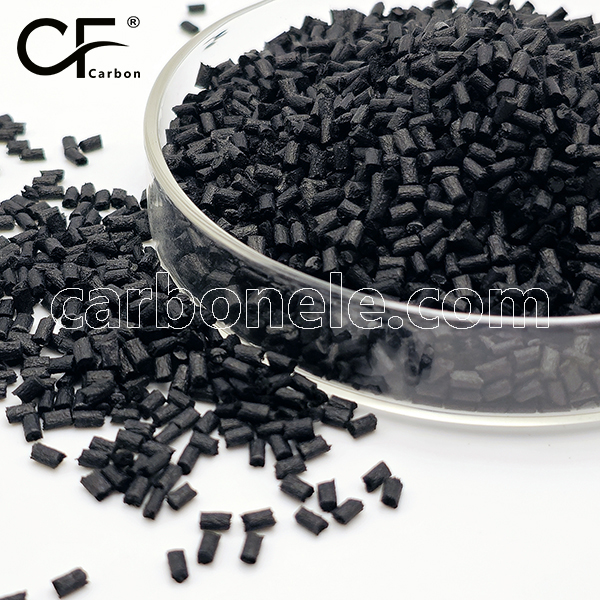How To Improve The Toughness Of PA66 CF Composites? - Carbon Fiber Compounds Manufacturer | Supplier
The high toughness of PA66 CF composites brings many benefits.
First of all, it can improve product reliability. It can withstand impact loads. For example, automotive parts can better deal with bumps and collisions during driving. In the aerospace field, it can also maintain structural integrity under sudden stress changes, prolonging the service life of products.
Secondly, it broadens the application fields. It can play a role in complex working conditions such as the chemical industry. It also provides possibilities for innovative designs. Designers can be more bold in designing complex-shaped or thin-walled structural parts.
Finally, it improves safety performance and reduces maintenance costs. In fields with high safety requirements such as automobiles and aviation, it can absorb energy and reduce personal injuries. Moreover, it is not easy to be damaged, reducing the replacement frequency and maintenance difficulty.
How to assess its toughness?
I. Mechanical property testing
1. Impact testing:
– Simple beam impact test: Prepare standard specimens. Use simple beam impact tester. Measure energy absorbed. Impact strength indicates toughness. Higher is better.
– Cantilever beam impact test: Prepare specimens. Use cantilever beam tester. Obtain impact strength. More suitable for thinner specimens.
2. Tensile testing:
– Conduct test. Get stress-strain curve. Analyze parameters. Elongation at break reflects toughness. Larger means better.
II. Microstructure analysis
1. SEM observation:
– Treat fractured specimen. Use SEM. Observe interface, crack path, fracture surface. Infer toughness. Well-bonded fibers and tortuous cracks mean good toughness. Also observe carbon fiber distribution. Uniform distribution is beneficial.
2. Metallographic analysis:
– Analyze material. Prepare specimens. Observe microstructure. Evaluate toughness by phase distribution and grain size. Fine and uniform grains improve toughness.
III. Dynamic mechanical analysis (DMA)
1. Temperature sweep test:
– Use analyzer. Conduct test. Measure parameters with temperature. Loss factor reflects damping. More damping means better toughness. Analyze modulus curves.
2. Frequency sweep test:
– Analyze at different frequencies. Measure parameter changes. Simulates loading rates. Higher frequency: increased storage modulus, decreased loss factor. Lower frequency: opposite. Helps understand toughness.
IV. Practical application testing
1. Simulate actual working condition testing:
– Design tests based on application. For automotive parts, test vibration, impact, fatigue. For casings, test drop and compression. Evaluate toughness intuitively.
2. Product performance testing:
– Conduct tests on products. Evaluate toughness and other indicators. For quality control and optimization.
How to improve the toughness of PA66 CF composites?
1. Adding toughening agents:
– Maleic anhydride grafted ethylene elastomer: This agent can boost impact resistance and toughness of PA66 CF composites. It also improves molding processability and reduces water absorption. Adjust addition amount (5%-20%) based on toughness needs and cost.
– Other polymer toughening agents: Like TPU and POE. These have good flexibility and elasticity, form compatibility with PA66 CF composites, and absorb energy to increase toughness.
2. Optimizing carbon fiber surface treatment:
– Using coupling agents: They form bonds between carbon fiber and PA66 matrix, strengthening interfacial bonding. Silane coupling agents like KH-550, KH-560, and KH-570 enhance carbon fiber surface activity for better bonding and improved overall performance including toughness.
– Plasma treatment: Treats carbon fiber to introduce active groups, increase roughness, and enhance interfacial interaction with PA66. Improves toughness and strength.
3. Employing nanotechnology:
– Adding nanofibers: PA66 nanofibers by electrospinning. As an interlayer in PA66 CF composites, they improve fracture toughness without sacrificing in-plane mechanical properties. Select optimal electrospinning parameters to enhance toughness.
– Adding nanoparticles: Nanoscale inorganic particles like nano-silica and nano-calcium carbonate disperse in PA66 CF composites to toughen. Impede crack expansion and absorb energy for improved toughness.
4. Adjusting composite formula ratio:
– Optimizing PA66 to CF ratio: Find the best ratio for balanced properties. Increasing PA66 content within a range can enhance toughness but may reduce strength and stiffness. Adjust according to application needs.
– Adding other additives: Besides toughening agents and nanoparticles, add antioxidants and lubricants. Improve processing performance and stability, indirectly enhancing toughness.
5. Improving processing technology:
– Optimizing molding parameters: In processes like injection molding, extrusion, and compression molding, adjust parameters like temperature, pressure, and speed. Improve microstructure and toughness. For example, lower temperature reduces internal stress and increases toughness; higher pressure makes material more compact and enhances interfacial bonding.
– Adopting multilayer structure: Design a multilayer composite with different materials for complementary performance. Adding a tough layer on PA66 CF composites improves overall toughness.
Feature Product
-
PA12 LCF30 for Drone Fuselages & Wings
What do you know about PA12 LCF30? PA12 ...
-
Competitive Price PA6 LCF30 Composites
What’s it? PA6 LCF30, which stands...
-
ABS CF10 Compound ABS 10%CF Thermoplastic Compo...
What’s ABS CF10? ABS CF10 refers t...











